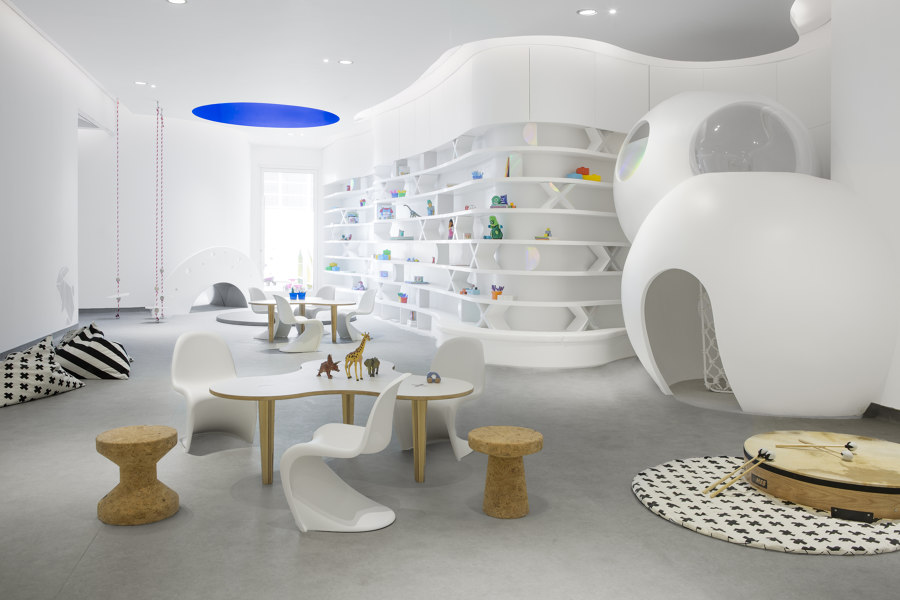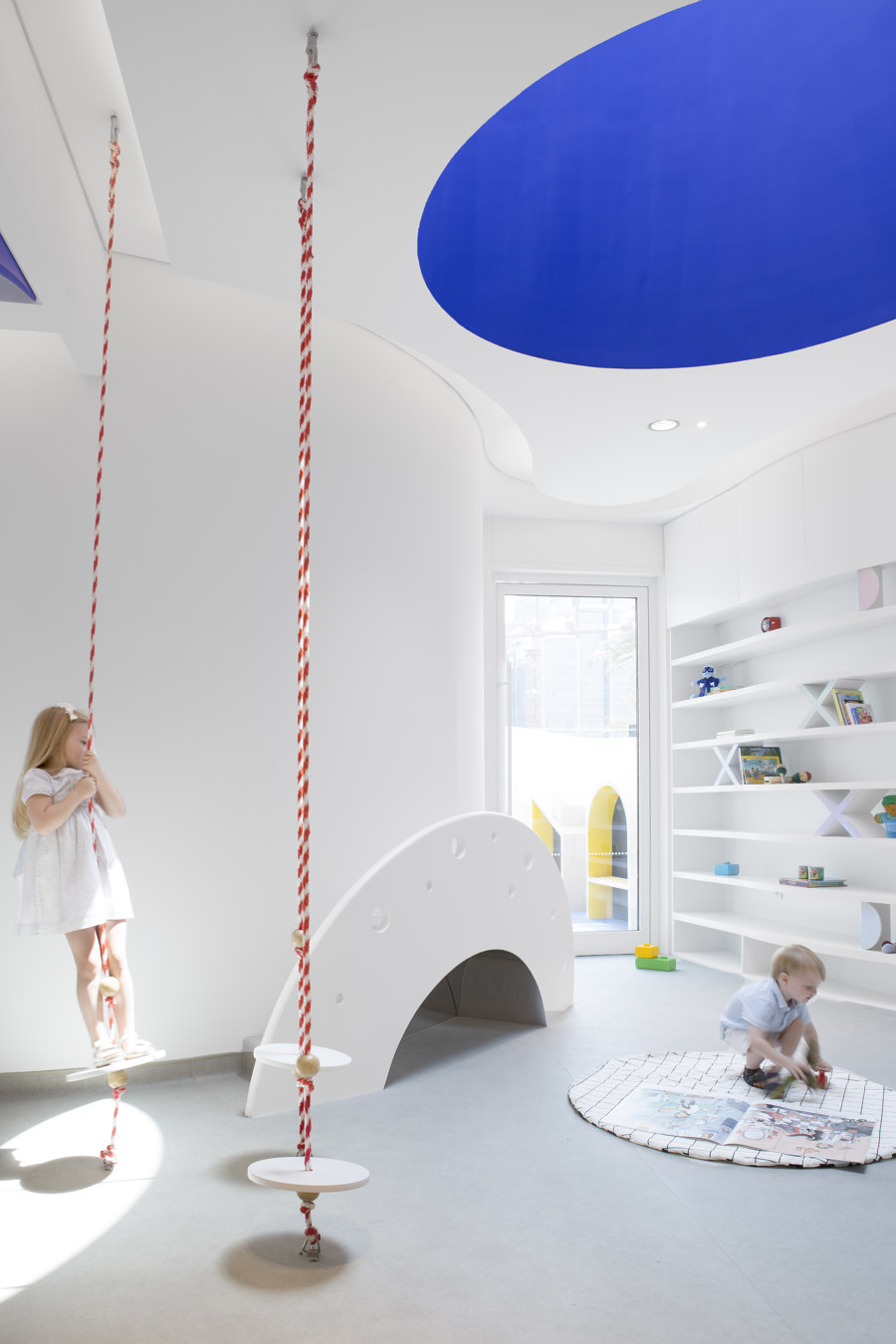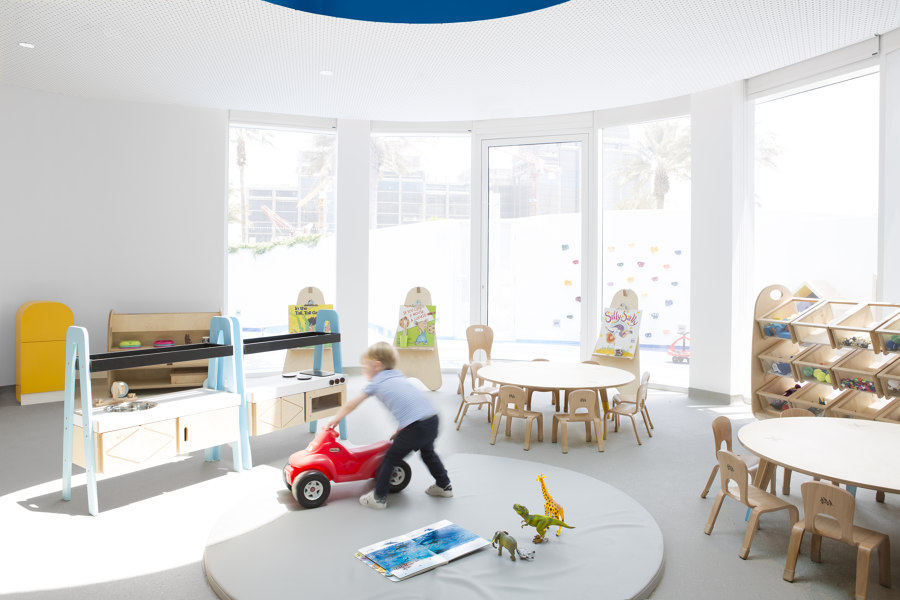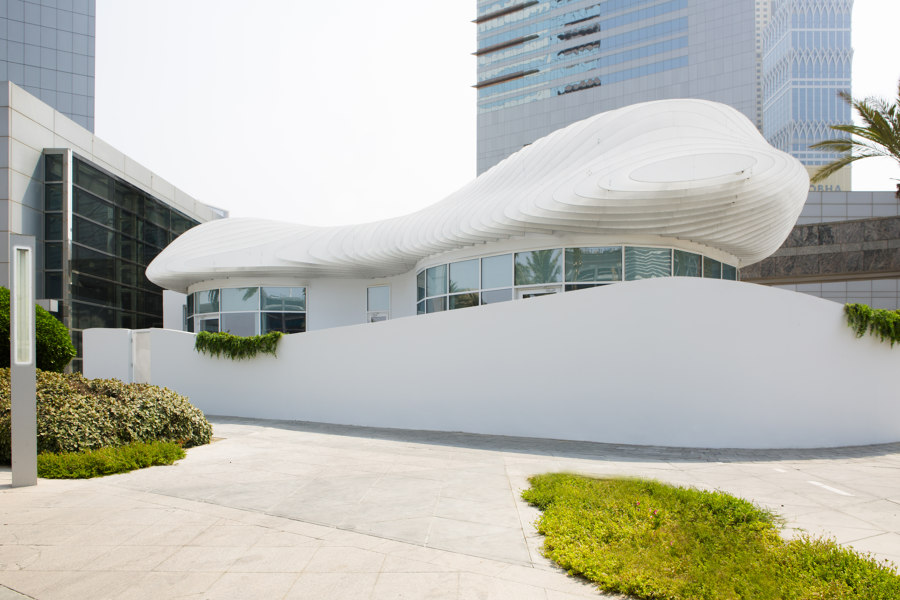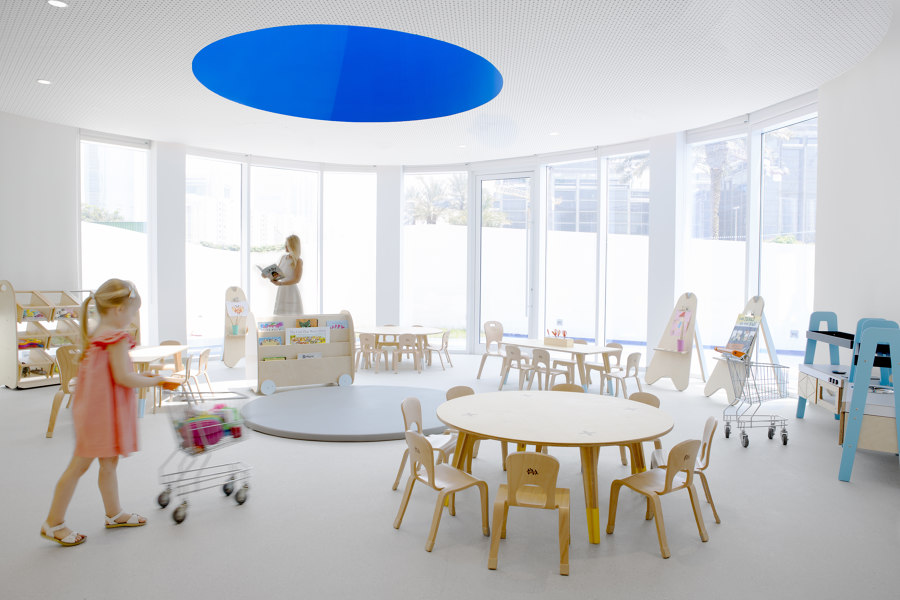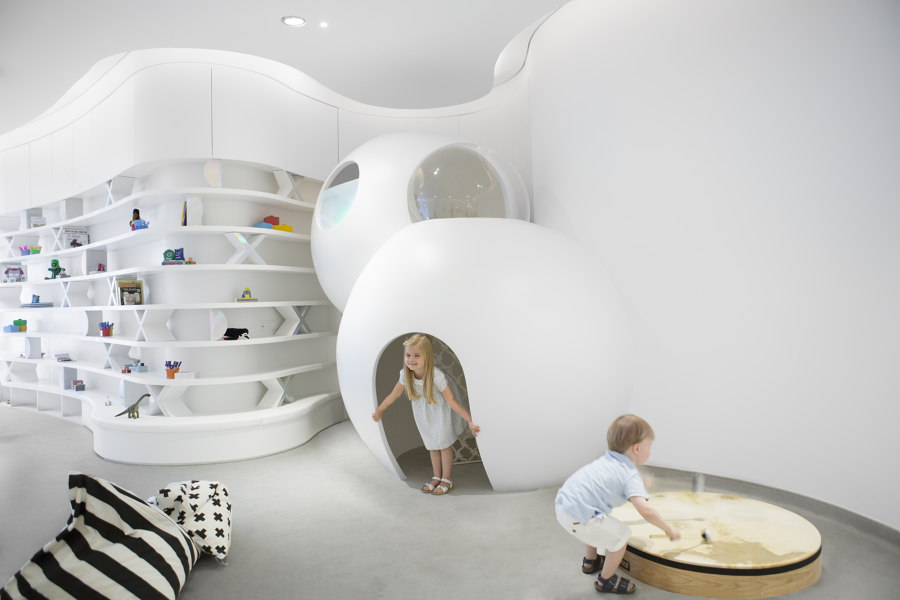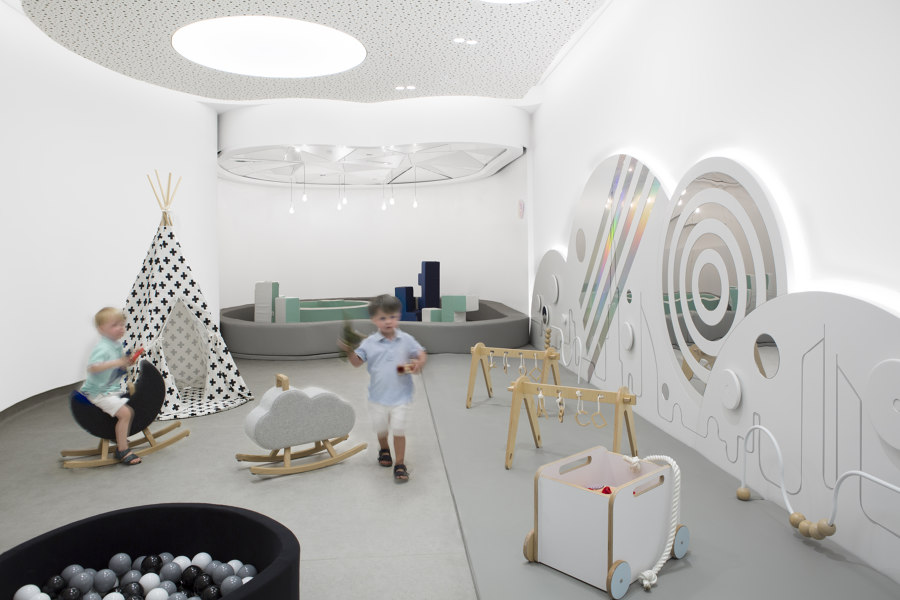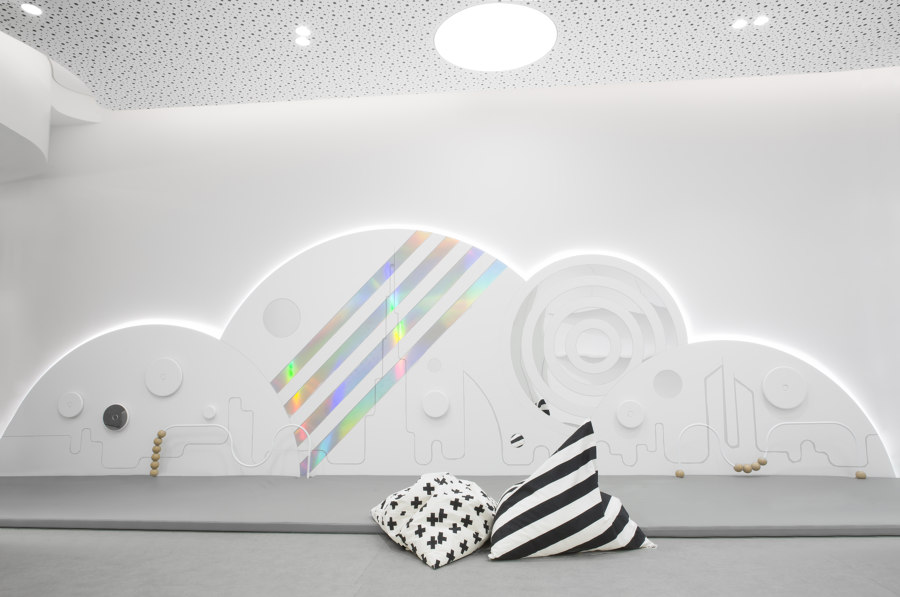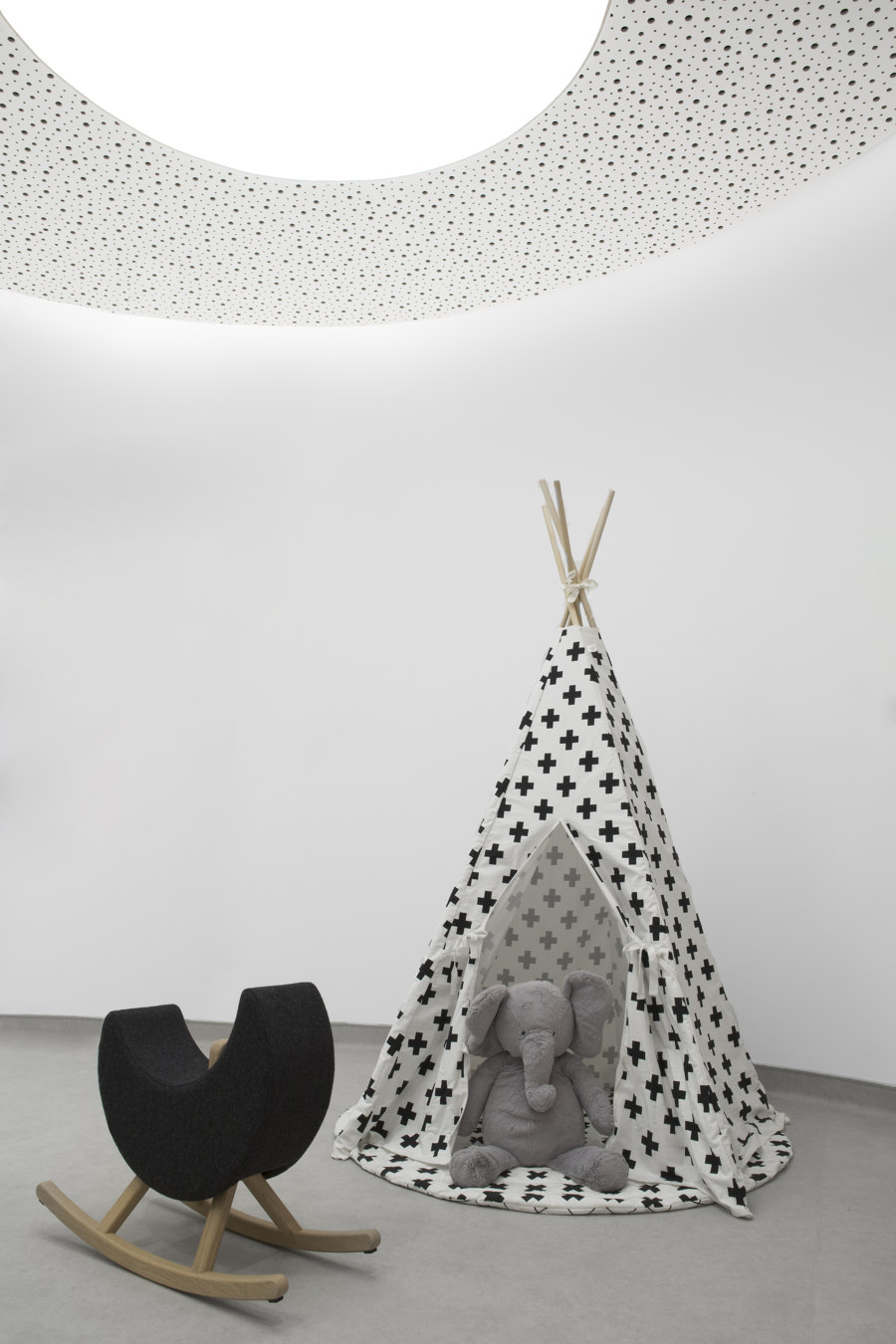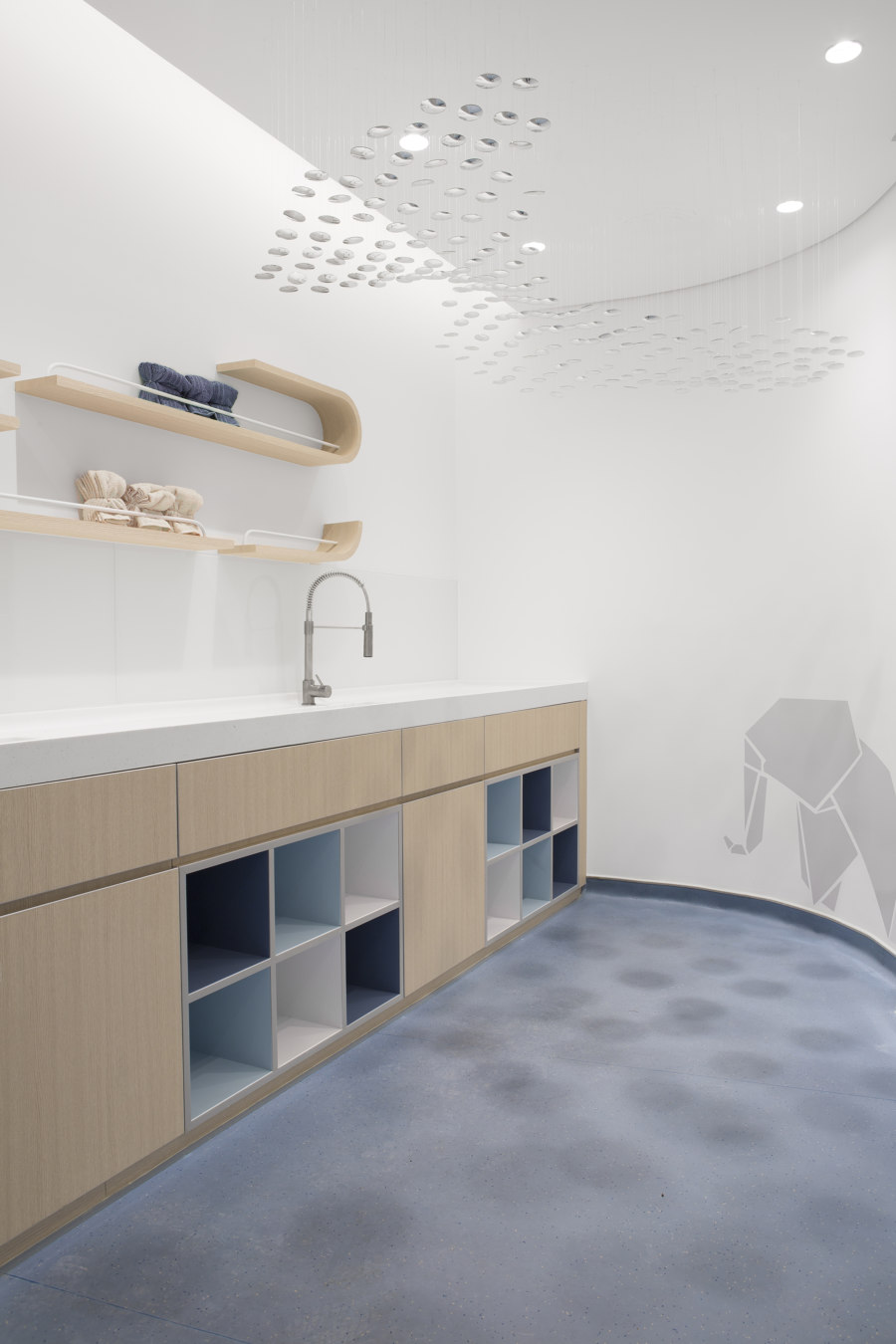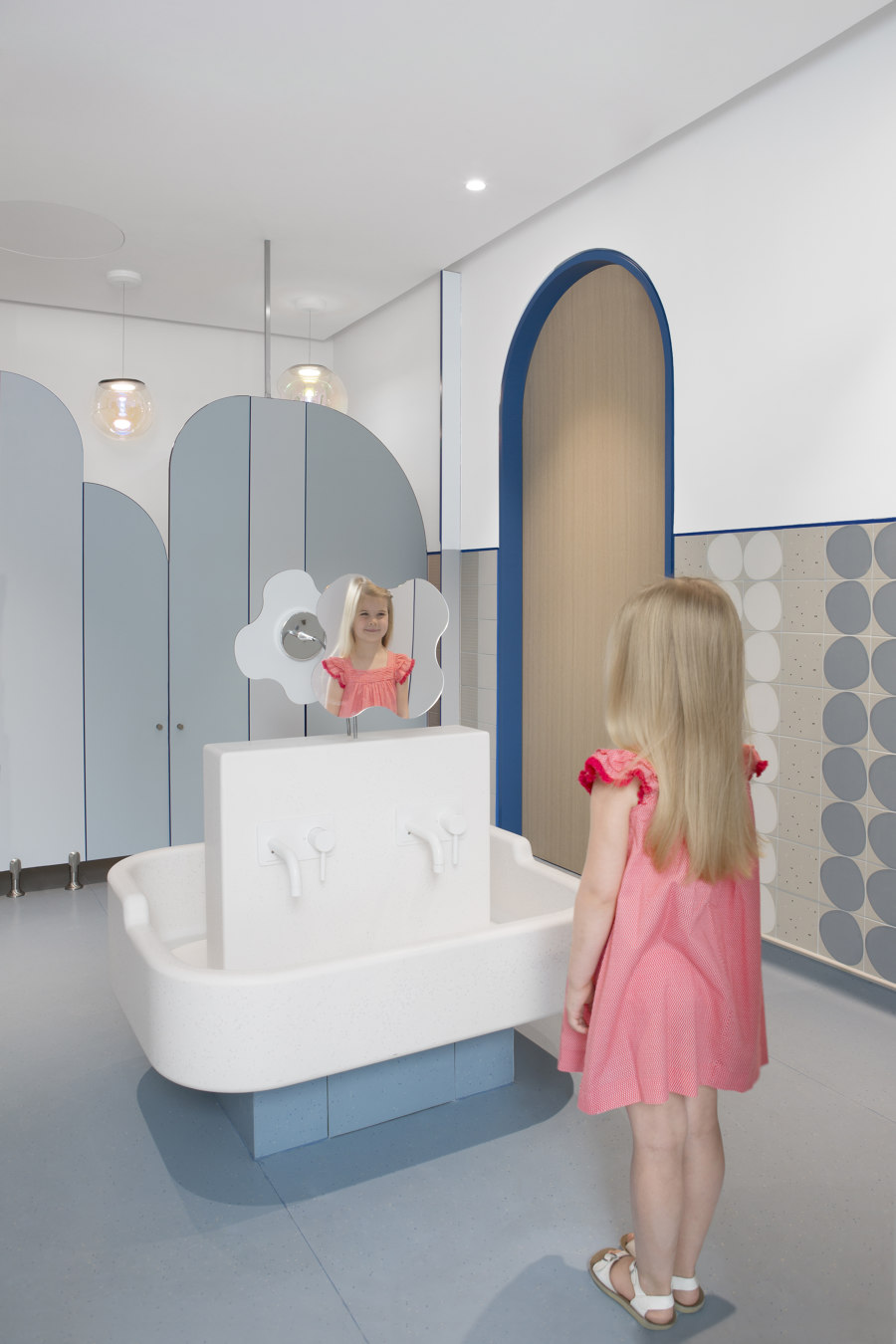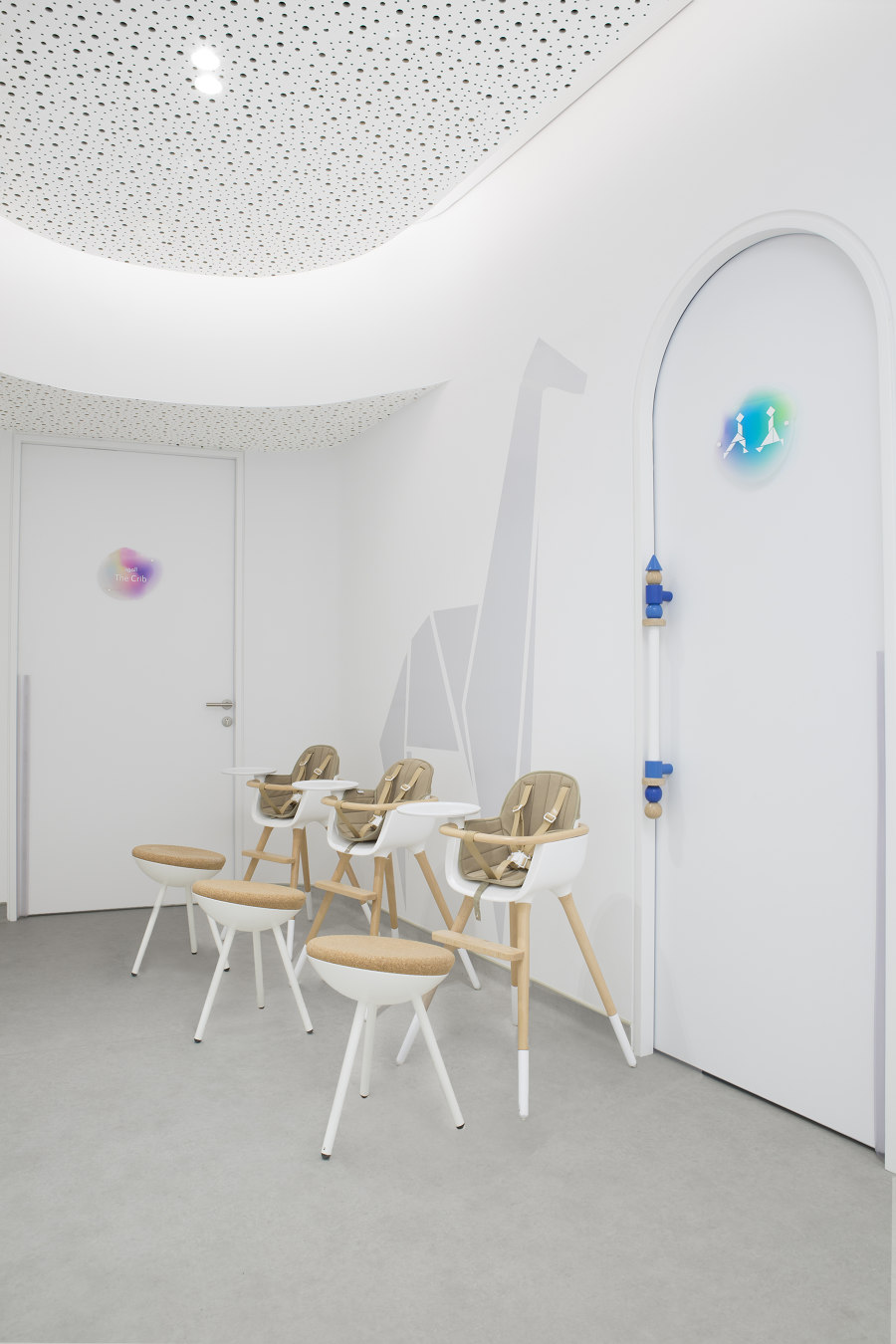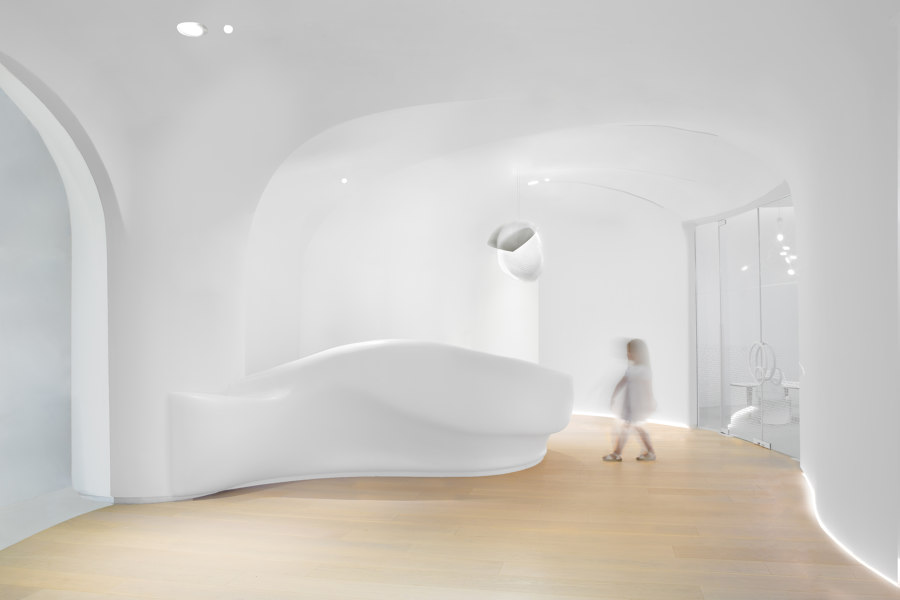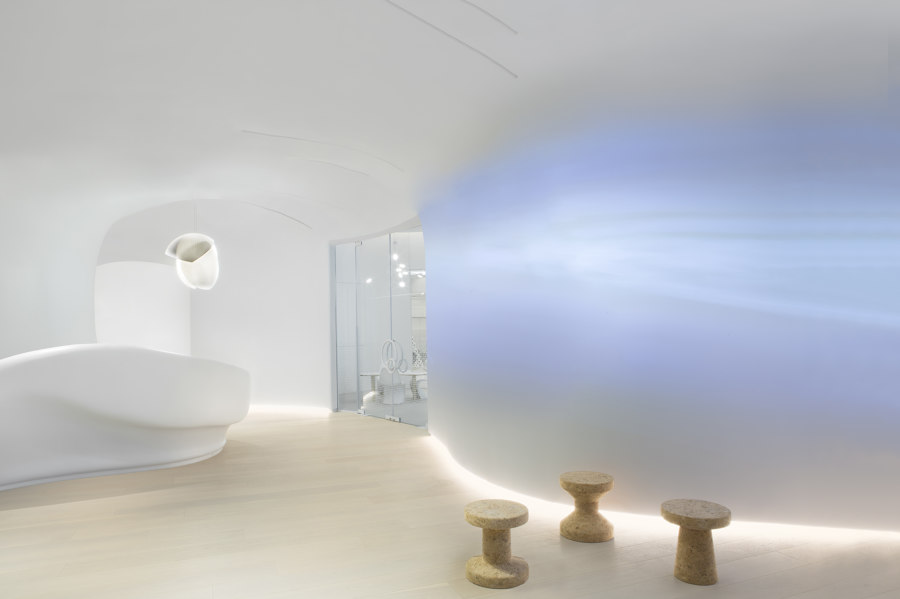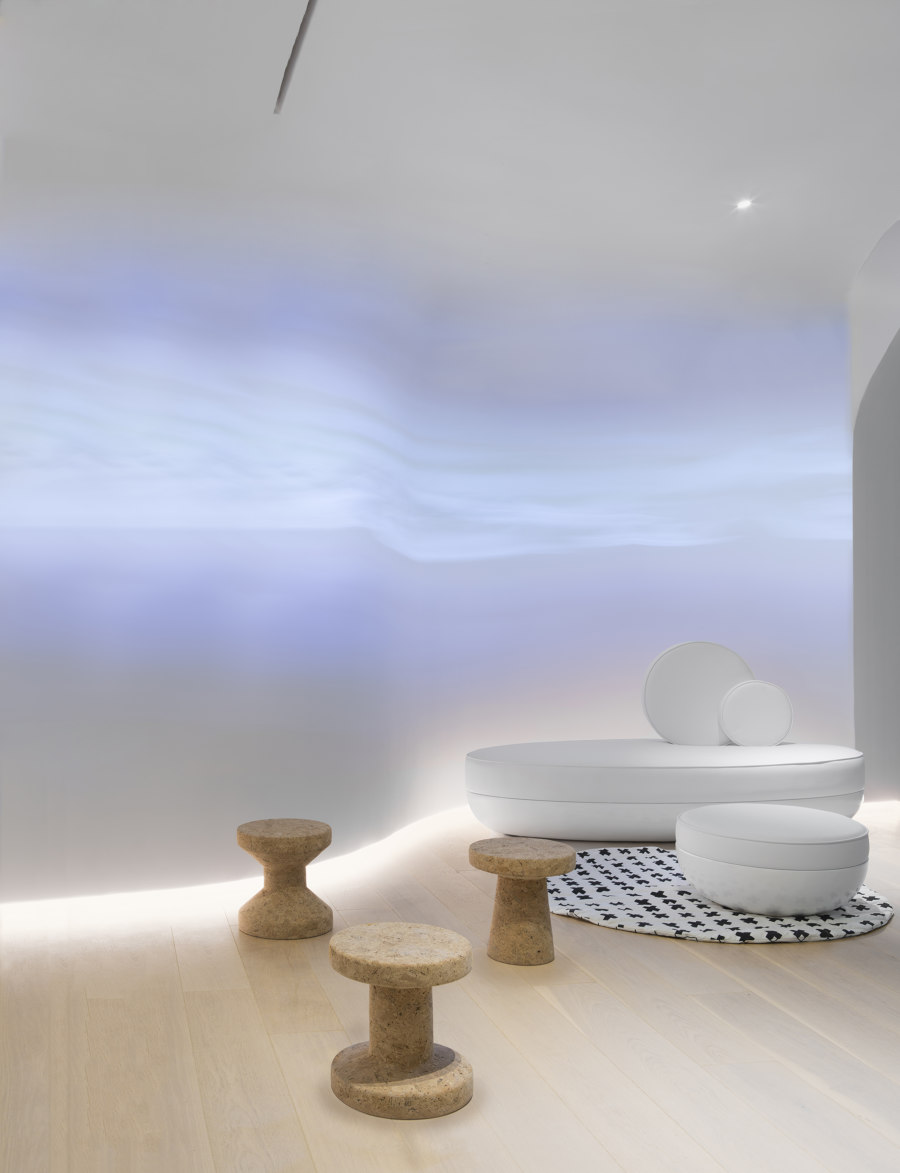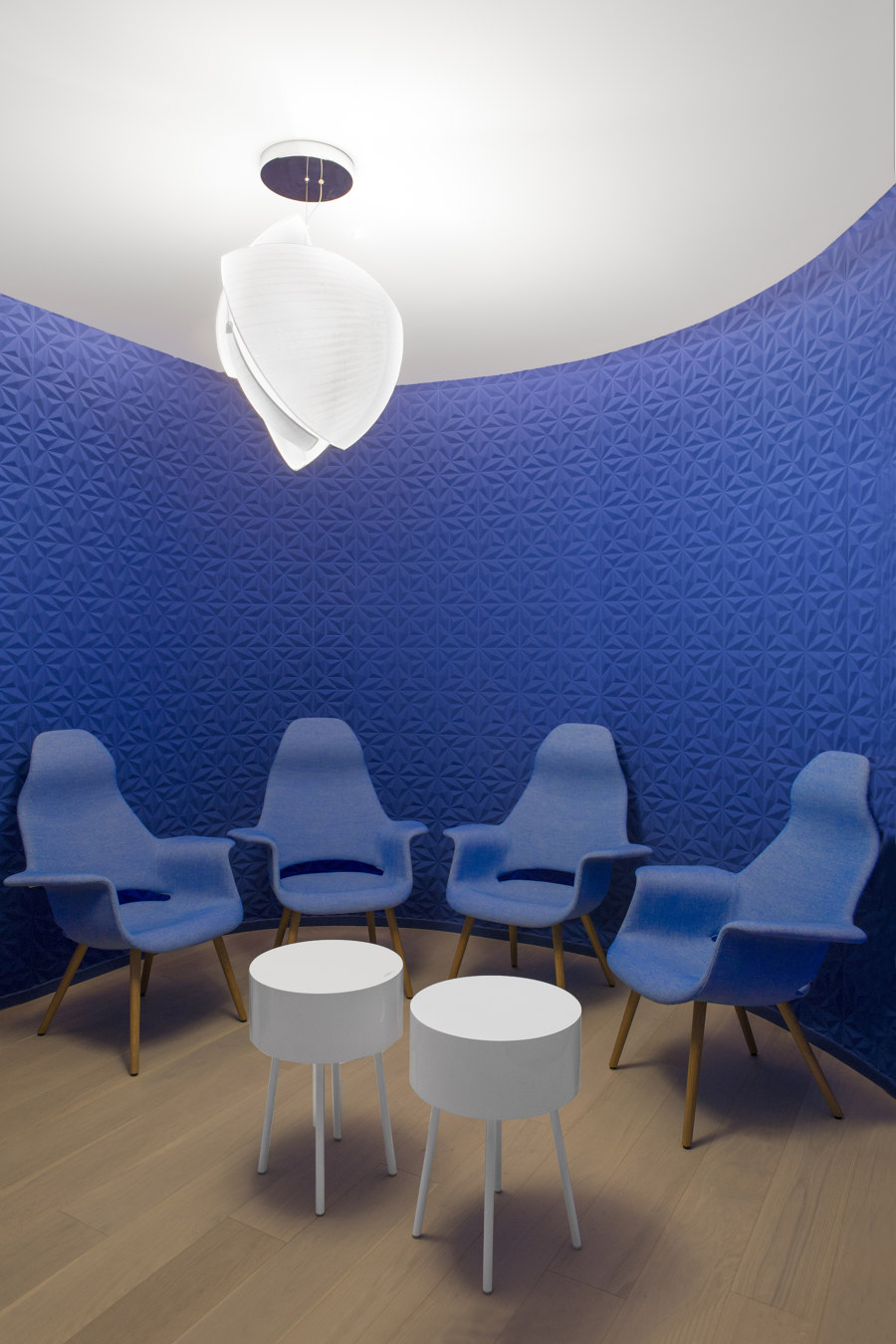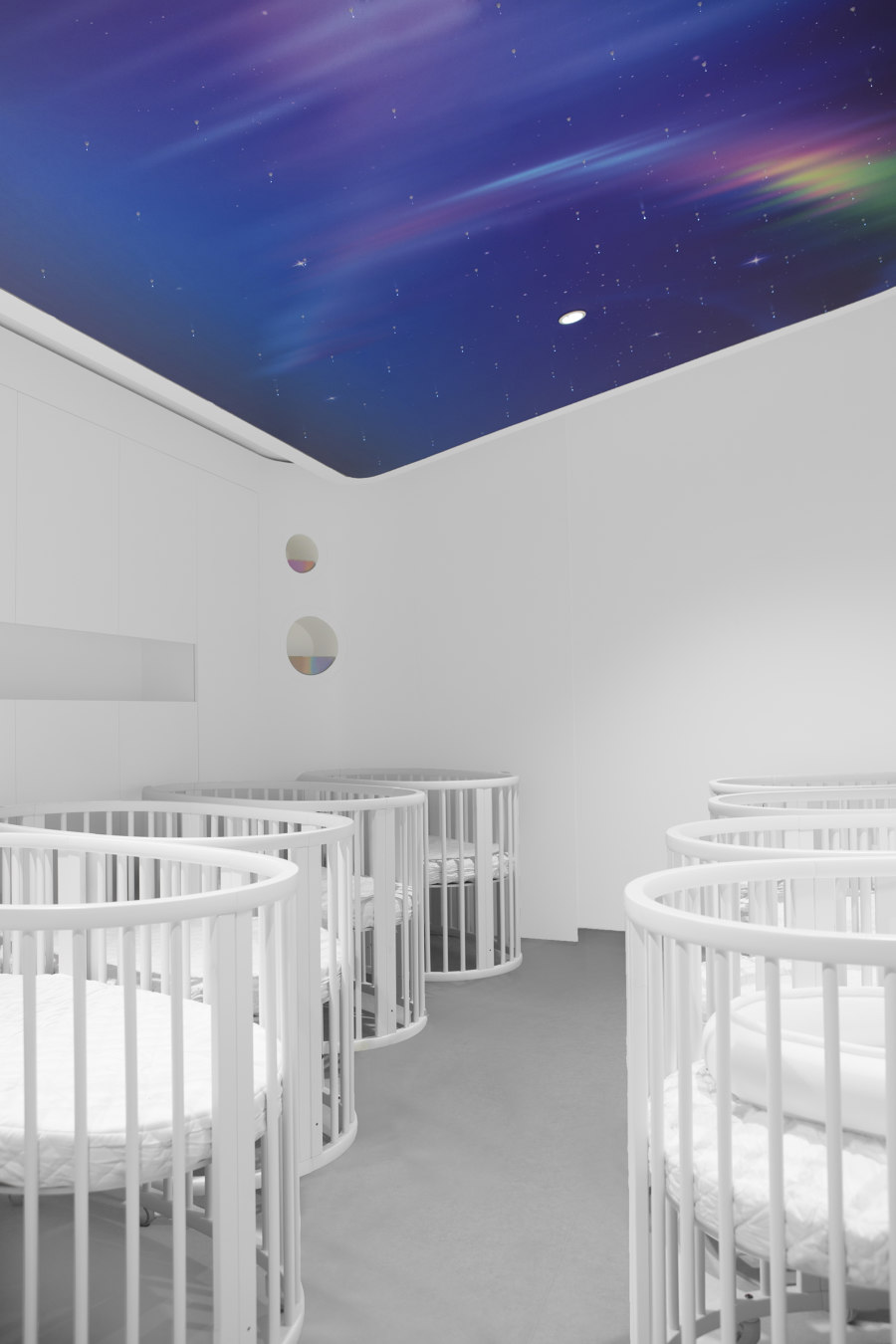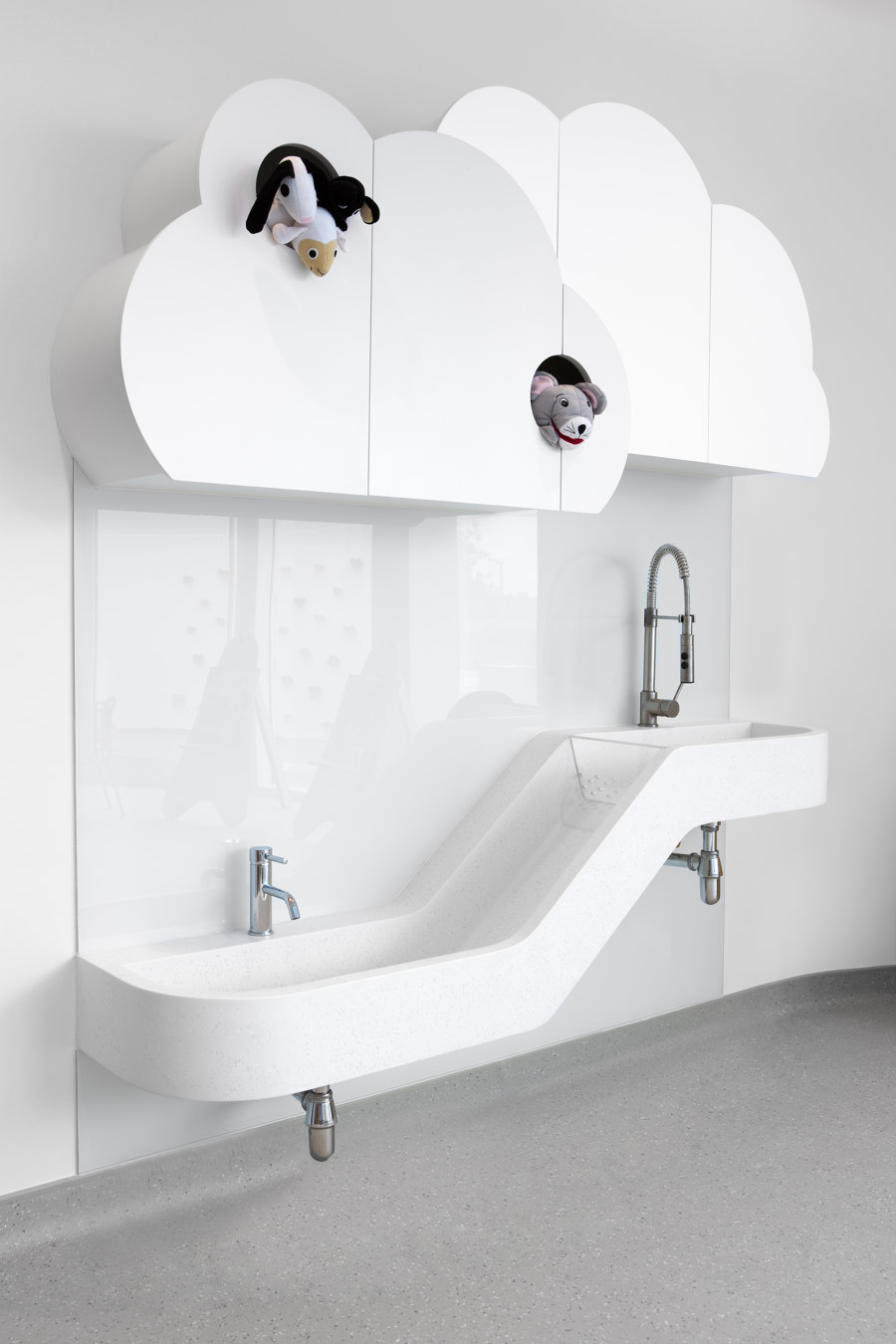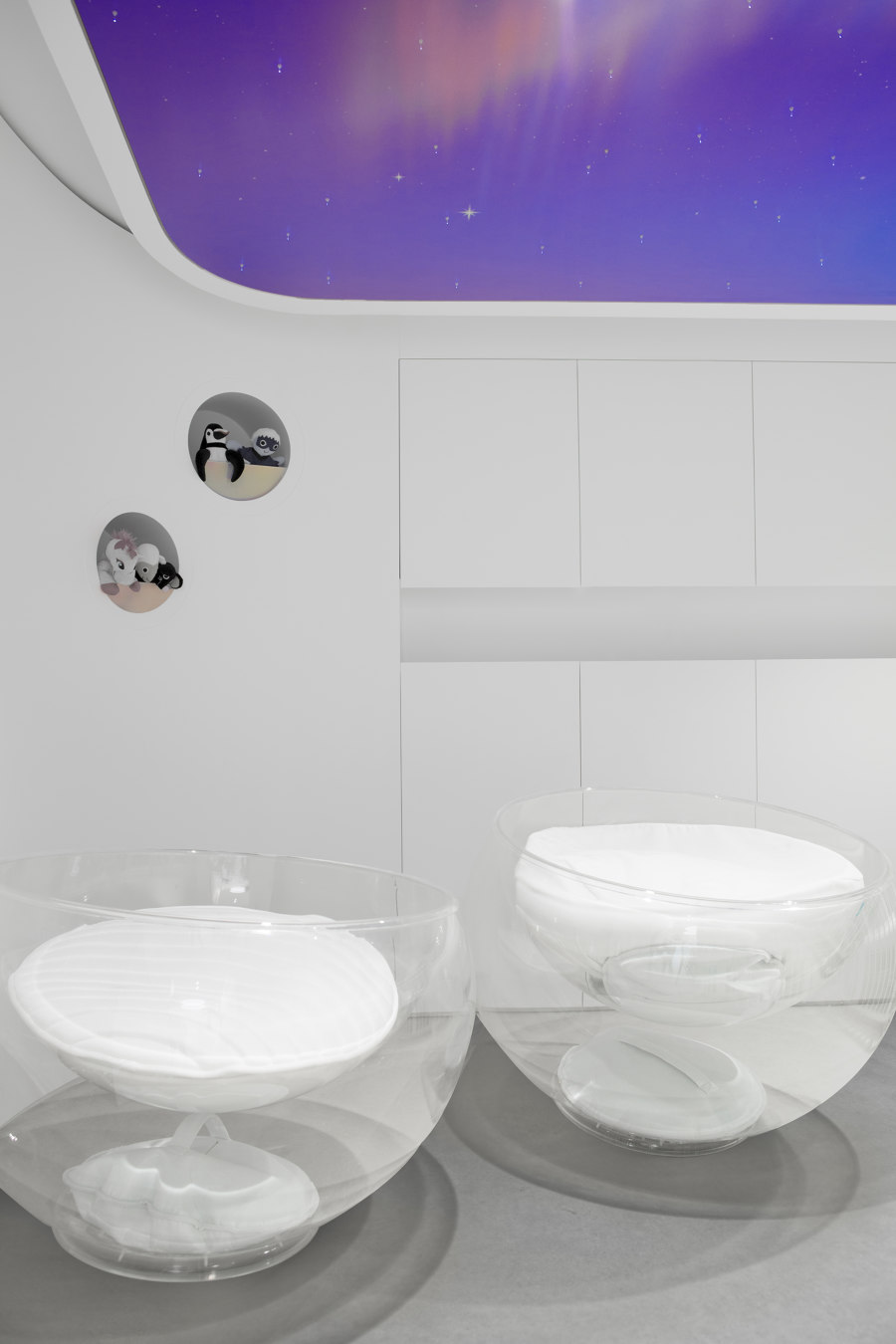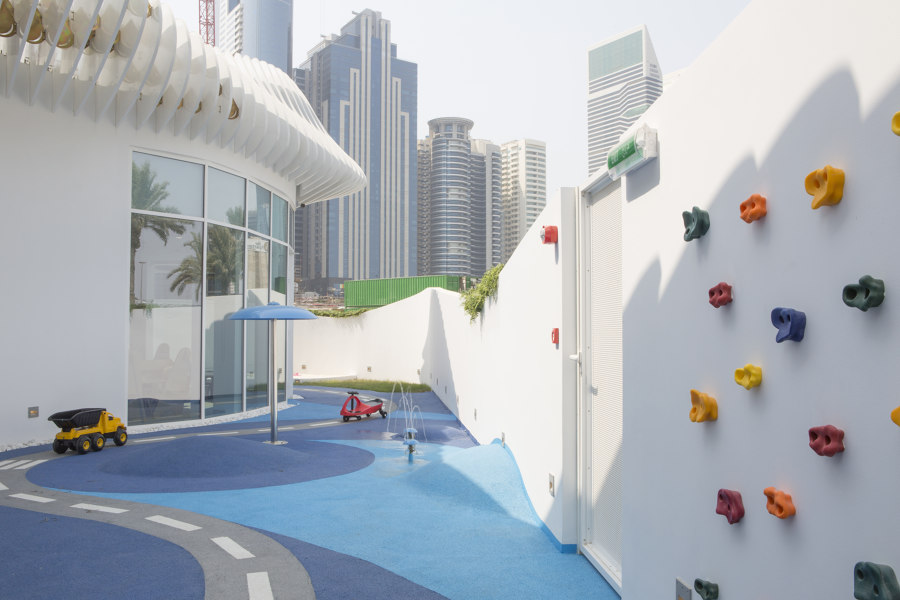“The biggest challenge facing education designers is that we’re preparing children for jobs that don’t yet exist” says Pallavi Dean, Founder and Creative Director at Roar (formerly Pallavi Dean Interiors). “So we designed a space where children would not just learn specific skills such as maths and reading, but would fall in love with learning itself. That meant designing a learning experience that’s playful, stimulating and social. Learning by doing is so much more powerful than a conventional lecture-style set up.”
For early years learning, there’s an added layer of responsibility, because you have to do all of this in a nurturing environment that makes the children feel safe, secure and happy. They’re finding their way in the world and they’re highly impressionable, so the impact of the interior design on their emotional and physical well-being is crucial.
Ora, the Nursery of the Future , has been guided by the vision of His Highness Sheikh Mohammed bin Rashid Al Maktoum, Vice President and Prime Minister of the UAE and Ruler of Dubai. It’s the latest addition to the Future Collection, the UAE Government’s suite of programs and initiatives focused on the UAE 2071 vision for innovation, including Dubai Future Foundation, Dubai Future Accelerator, Dubai Future Academy and Museum of the Future.
The design brief was to create a world-class learning experience that instils the habits of innovation and futurism that will stay with children for life.
She explains “One of the ways we bring this theory to life is by shunning traditional classrooms, instead creating ‘learning studios’. These spaces are flexible, adaptable and nimble, to accommodate different teaching and learning styles. They break down the ‘them and us’ barriers that exist between teachers and children in many education spaces, replacing them with a fluid, sociable, inclusive environment.”
“Ora’s philosophy is based on four key pillars – Leadership, Happiness & Positivity, Advanced Sciences including Artificial intelligence and Technology, we worked tirelessly to embed these ideas into every aspect of the design.”
One of the most striking architectural features is the cloud-like shape of the external structure we created in collaboration with Dubai-bas ed AR gallery.
“The narrative of the design was inspired by the image of a gentle, protective cloud, so while conceptualizing the various elements of the school, we asked ourselves, ‘would a young person feel safe and happy enough to really be authentic here?’ It was important to make sure every aspect allowed little ones to completely immerse themselves in their physical environment, naturally navigating according to their individual paces of learning.”
The design team incorporated the latest research from paediatric neuroscience to inform the design. The design is very conscious of the fact that during the first three years of life, a child’s brain will form more than a trillion neurological connections known as synapses. You won’t find bright colours and cartoon characters. Instead, surfaces are neutral to encourage children and educators to become the main sources of stimulation.
Another example: moving away from screen-based technology to an environment where child-safe technology is integrated into floors and walls. “With the touch of a little hand, surfaces light up or display nature-inspired images or children’s artworks,” says Pallavi. “We believe that all elements of a school’s environment – physical and human, interior and exterior – impact its educational framework, so it was imperative that the structure be transformed into a third, ‘silent’ educator, that also facilitates bonding, learning and self-discovery.”
The heart of the 600-square-metre nursery is called Mars Lab – a nod to the UAE’s ambitious Mars space programme. The Mars Lab is a community space, where children of all ages, along with teachers and parents, gather in large or small groups.
The space features a library and a ‘reading cloud’ (a giant inflatable cushion to snuggle into with a book), a ‘Sky House’ (a play on the traditional tree house) and a mini ‘Coding Hub’ where children can experiment with the idea of programming.
This space encourages movement, developing fine and gross motor skills, by combining traditional swings and slides with interactive projection technology. The design features bespoke installations where children can jump through projections of space, galaxies and planets, or leave a trail of flowers in a changing seasonal landscape.
The team used emerging design methodology and materials to create the design. In one approach, Agata, Design Director at Roar employed computational design to create a sculptural reception space with free-flowing curved ceiling and walls.
Pallavi says: “Research shows that children find curves far more soothing than harsh angles, but constructing rooms with right angles is much easier. We solved this problem by using Agata’s parametric design skills, then working with a boat-builder in Dubai to make it. It was very experimental for them – they’d never worked on interiors before – but it’s worked beautifully.”
Pallavi concludes: “We’re exceptionally proud to have been part of this project, and genuinely believe that Ora really does help redefine the future of early-years education design.”
Design Team:
Roar Design Studio: Pallavi Dean, Agata Kurzela and Christina Morgan
Client: Prime Minister’s Office, UAE
